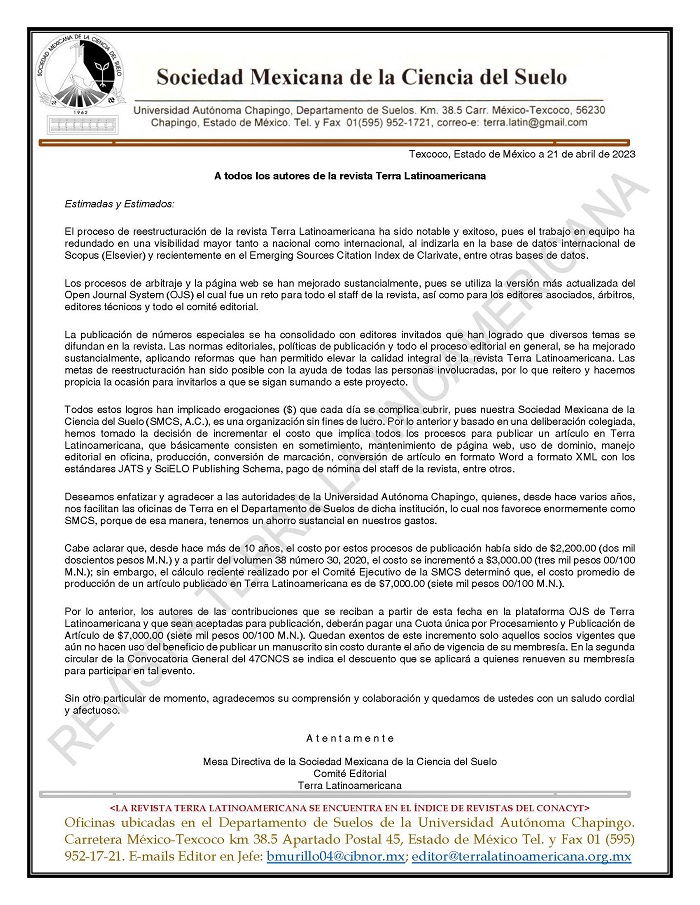Ascophyllum nodosum in Optimizing Yield and Growth of Common Bean Under Water Deficit
DOI:
https://doi.org/10.28940/terralatinoamericana.v43i.2148Keywords:
biostimulant, seaweed extract, dry weight, Phaseolus vulgaris L., droughtAbstract
Drought during the flowering period may cause severe reductions in yield and its components, as well as in growth or dry weithg accumulation in common bean plants (Phaseolus vulgaris L.). The objective of the present work is to determine the foliar application ef fect on a commercial biostimulant based on Ascophyllum nodosum extract on yield and its components, as well as plant growth through accumulated dry weight in the Azufrado Higuera bean variety under irrigation and drought conditions in a greenhouse. A randomized complete block design with a 2×2 factorial arrangement was used (two moisture levels: irrigation and drought; and two A. nodosum (with and without)) applicaton levels with four replicates. The variables evaluated were seed yield per plant (SYP), total biomass (TBM), number of normal pods per plant (NP), normal seeds per plant (NSP), leaf dry weight (LDW), stem dry
weight (SDW), root dry weight (RDW), and root length (RL); SY and NP were 35 and 29% higher under irrigation than under drought. The A. nodosum application only af fected root growth, showing no ef fect on the plant aerial part. Under both irrigation and drought conditions with A. nodosum application, RDW was higher, while RL was similar under these conditions.
Downloads
Publication Facts
Reviewer profiles N/A
Author statements
- Academic society
- Terra Latinoamericana
- Publisher
- Mexican Society of Soil Science, C.A.

















